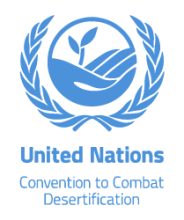Resource information
Although there is global consensus that women’s land rights are fundamental for the realization of food security and rural development, accurate and reliable statistics to monitor the attainment and realisation of these rights are still lacking. Indeed, the lack of clear and accurate statistics on landownership and land management– that are disaggregated by sex - is problematic for developing clear policy responses to, and for monitoring of, inequalities faced by women and men in rural areas.
Women’s land rights are often discussed using indicators of agricultural holders and landowners interchangeably. The agricultural holder is the manager of the holding and is a useful concept for understanding issues of agricultural productivity and responsibilities in production. The landowner has legal claims to the land and typically has the right to sell, bequeath or mortgage the land. Both are important components of women’s land rights, but they are different and should not be confused with one another –rather they should complement each other to enhance our understanding of women’s rights to and control over land resources.
Both landownership and management statistics are becoming increasingly available as multiple
international efforts are underway with the aim to increase availability of, and access to, relevant
data on gender and land.


